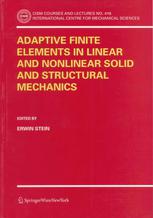

Most ebook files are in PDF format, so you can easily read them using various software such as Foxit Reader or directly on the Google Chrome browser.
Some ebook files are released by publishers in other formats such as .awz, .mobi, .epub, .fb2, etc. You may need to install specific software to read these formats on mobile/PC, such as Calibre.
Please read the tutorial at this link: https://ebookbell.com/faq
We offer FREE conversion to the popular formats you request; however, this may take some time. Therefore, right after payment, please email us, and we will try to provide the service as quickly as possible.
For some exceptional file formats or broken links (if any), please refrain from opening any disputes. Instead, email us first, and we will try to assist within a maximum of 6 hours.
EbookBell Team

0.0
0 reviewsThis course with 6 lecturers intends to present a systematic survey of recent re search results of well-known scientists on error-controlled adaptive finite element methods in solid and structural mechanics with emphasis to problem-dependent concepts for adaptivity, error analysis as well as h- and p-adaptive refinement techniques including meshing and remeshing. Challenging applications are of equal importance, including elastic and elastoplastic deformations of solids, con tact problems and thin-walled structures. Some major topics should be pointed out, namely: (i) The growing importance of goal-oriented and local error estimates for quan tities of interest—in comparison with global error estimates—based on dual finite element solutions; (a) The importance of the p-version of the finite element method in conjunction with parameter-dependent hierarchical approximations of the mathematical model, for example in boundary layers of elastic plates; (Hi) The choice of problem-oriented error measures in suitable norms, consider ing residual, averaging and hierarchical error estimates in conjunction with the efficiency of the associated adaptive computations; (iv) The importance of implicit local postprocessing with enhanced test spaces in order to get constant-free, i. e. absolute-not only relative-discretizati- error estimates; (v) The coupling of error-controlled adaptive discretizations and the mathemat ical modeling in related subdomains, such as boundary layers. The main goals of adaptivity are reliability and efficiency, combined with in sight and access to controls which are independent of the applied discretization methods. By these efforts, new paradigms in Computational Mechanics should be realized, namely verifications and even validations of engineering models.